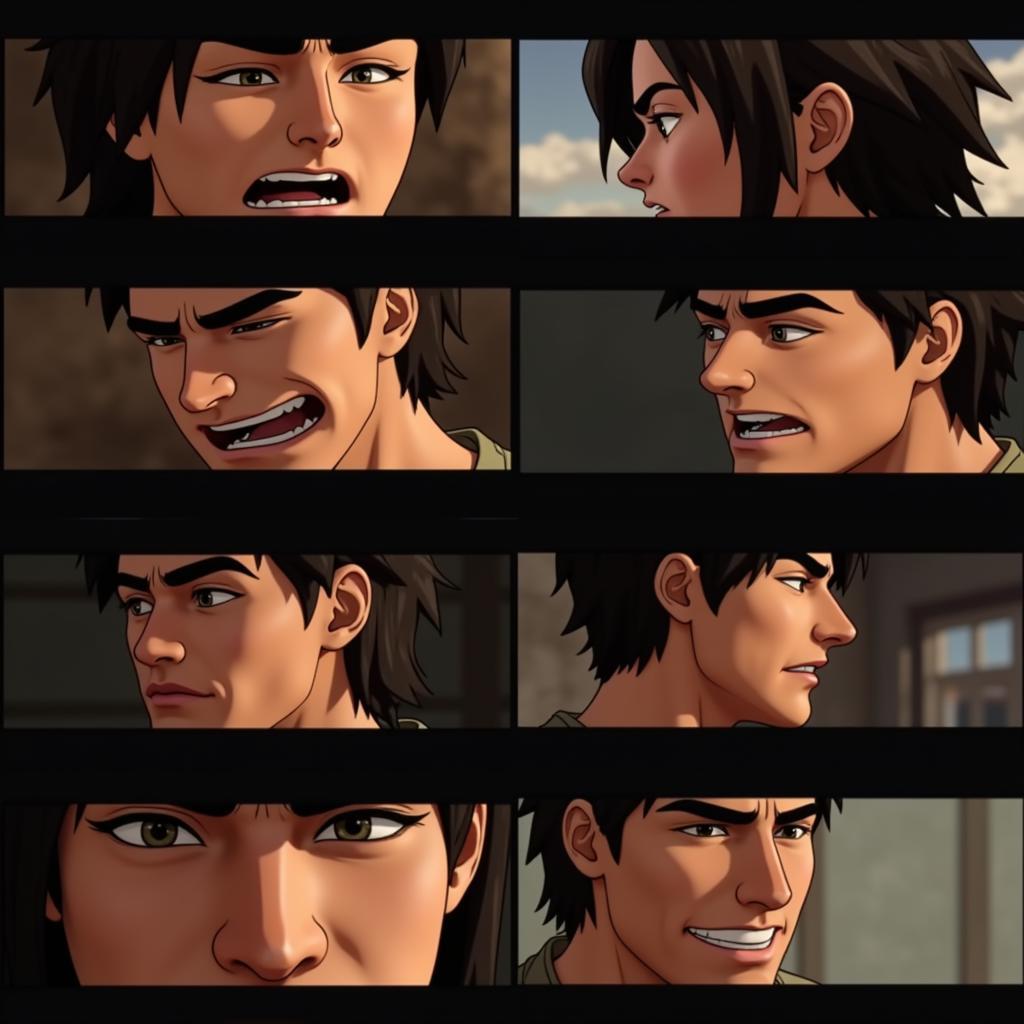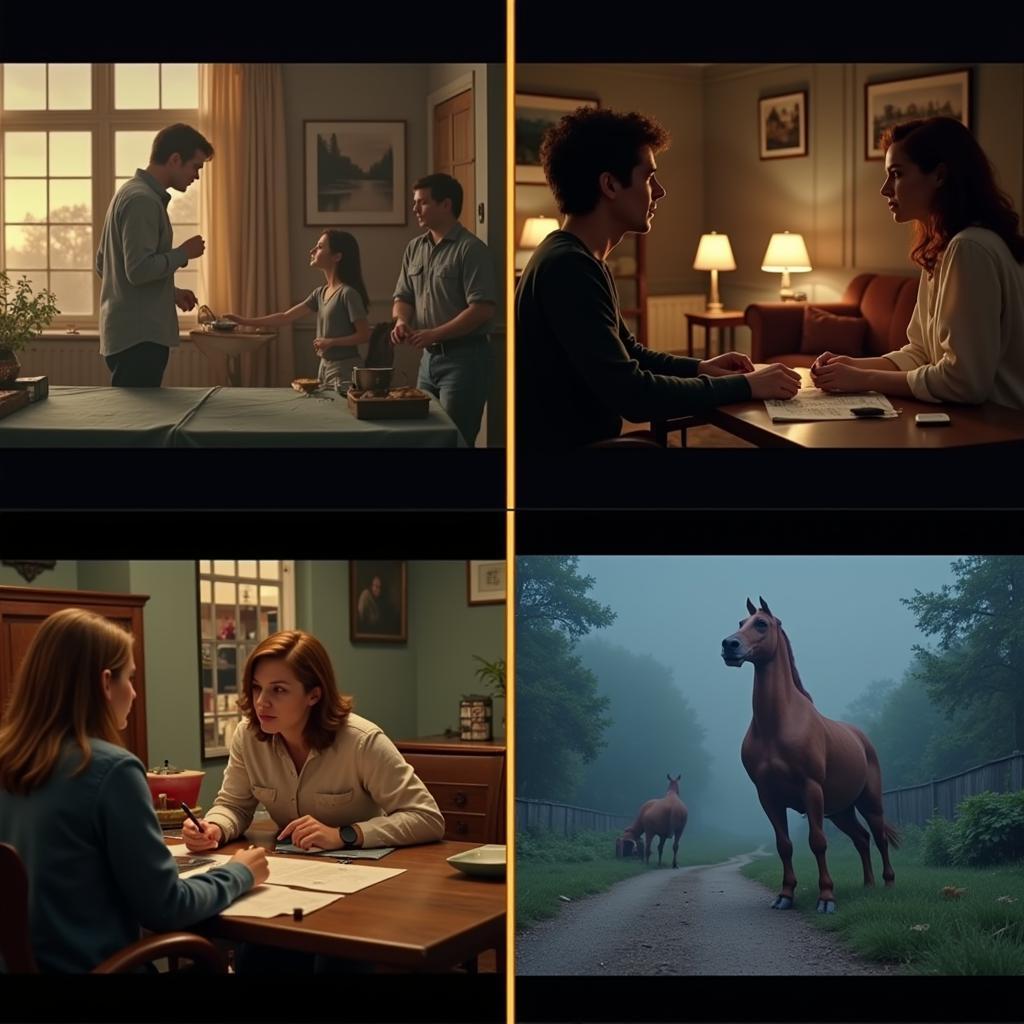Cutscenes, those cinematic interludes within video games, have become an integral part of the gaming experience. But what exactly are cutscenes, and why are they so crucial to a game’s narrative?
More Than Just Pretty Pictures: The Purpose of Cutscenes
Essentially, cutscenes are pre-rendered or real-time rendered sequences that temporarily pause gameplay to advance the story, develop characters, or reveal crucial information. They act as windows into the game’s world, offering insights that gameplay alone cannot always achieve.
Think back to some of your favorite games. Chances are, a memorable cutscene immediately springs to mind. Remember the shocking reveal in retro 24? Or the heart-wrenching farewell in that RPG classic? These moments, etched into our memories, highlight the power of cutscenes to elicit powerful emotions and create lasting connections with virtual worlds.
 Emotional Impact of Cutscenes
Emotional Impact of Cutscenes
Weaving a Narrative Tapestry: How Cutscenes Enhance Storytelling
Cutscenes are much more than just visual spectacles; they are powerful narrative tools. Let’s delve into the key ways they enhance storytelling in video games:
- Driving the Plot Forward: Cutscenes propel the narrative, introducing new conflicts, plot twists, and character motivations. They act as narrative bridges, seamlessly connecting different gameplay segments and providing context to the player’s actions.
- Character Development: Through dialogue, facial expressions, and interactions, cutscenes breathe life into characters. Witnessing a character’s vulnerability, growth, or transformation in a cutscene can forge a strong emotional bond between the player and the game world.
- World-Building: Cutscenes transport players to richly detailed environments, showcasing the game’s lore, history, and atmosphere. From sweeping vistas to intricate architectural details, they provide glimpses into the game’s universe beyond the confines of gameplay.
- Setting the Mood: Music, lighting, and camera angles are carefully orchestrated in cutscenes to evoke specific emotions and set the tone for the gameplay ahead. A suspenseful cutscene can heighten tension before a challenging mission, while a lighthearted one can provide a moment of respite.
The Evolution of Cutscenes: From FMV to In-Engine Masterpieces
Cutscenes have come a long way since their inception. Early games relied heavily on Full Motion Video (FMV) cutscenes, often featuring live-action actors against pre-rendered backdrops. While groundbreaking at the time, these early attempts sometimes struggled to seamlessly blend with the in-game visuals.
Fast forward to today, and advancements in technology have led to stunning in-engine cutscenes, often indistinguishable from the gameplay itself. These cinematic experiences feature highly detailed character models, lifelike animations, and breathtaking visual effects, blurring the line between gaming and cinema.
 Evolution of Cutscenes
Evolution of Cutscenes
The Future of Cutscenes: Interactive Storytelling and Beyond
As technology continues to evolve, we can expect even more immersive and interactive cutscenes in the future. Imagine influencing the outcome of a conversation through dialogue choices or participating in quick-time events that directly impact the unfolding narrative.
Some games are already pushing the boundaries, seamlessly blending cutscenes with gameplay elements. Imagine a cutscene transforming into a playable action sequence, blurring the lines between passive viewing and active participation.
The potential is limitless, and the future of cutscenes promises to be an exciting journey for both developers and players alike.
Conclusion
Cutscenes have evolved from simple narrative devices to powerful storytelling tools that elevate the gaming experience. They draw us into intricate narratives, make us care about digital characters, and leave us with lasting impressions long after the credits roll.
As technology continues to advance, the line between gaming and cinema will continue to blur, opening up new possibilities for immersive and interactive storytelling through the art of the cutscene.
FAQ
1. What is the difference between a cutscene and a cinematic?
While the terms are often used interchangeably, a cutscene specifically refers to a non-interactive sequence within a video game. Cinematics, on the other hand, can encompass a wider range of pre-rendered sequences, including game trailers or opening sequences.
2. Can I skip cutscenes in video games?
Most games offer the option to skip cutscenes, allowing players to prioritize gameplay. However, it’s generally recommended to watch them at least once to fully experience the intended narrative.
3. Are cutscenes always pre-rendered?
While many cutscenes are pre-rendered, modern games often utilize real-time rendering engines to create cutscenes that seamlessly blend with gameplay visuals.
4. What are some examples of games with exceptional cutscenes?
Games like The Last of Us Part II, Red Dead Redemption 2, and God of War are renowned for their cinematic storytelling and breathtaking cutscenes.
5. Do all video games have cutscenes?
No, not all video games utilize cutscenes. Some games, particularly in genres like puzzle or platformers, might rely solely on in-game events and dialogue to convey their narrative.
Need Help?
For further assistance or inquiries, please don’t hesitate to contact us:
Phone: 0902476650
Email: [email protected]
Address: 139 Đ. Võ Văn Kiệt, Hoà Long, Bà Rịa, Bà Rịa – Vũng Tàu, Việt Nam
Our dedicated customer support team is available 24/7 to assist you. If you’re curious about other aspects of gaming, you can find more informative articles like is swtor dead on our website.





